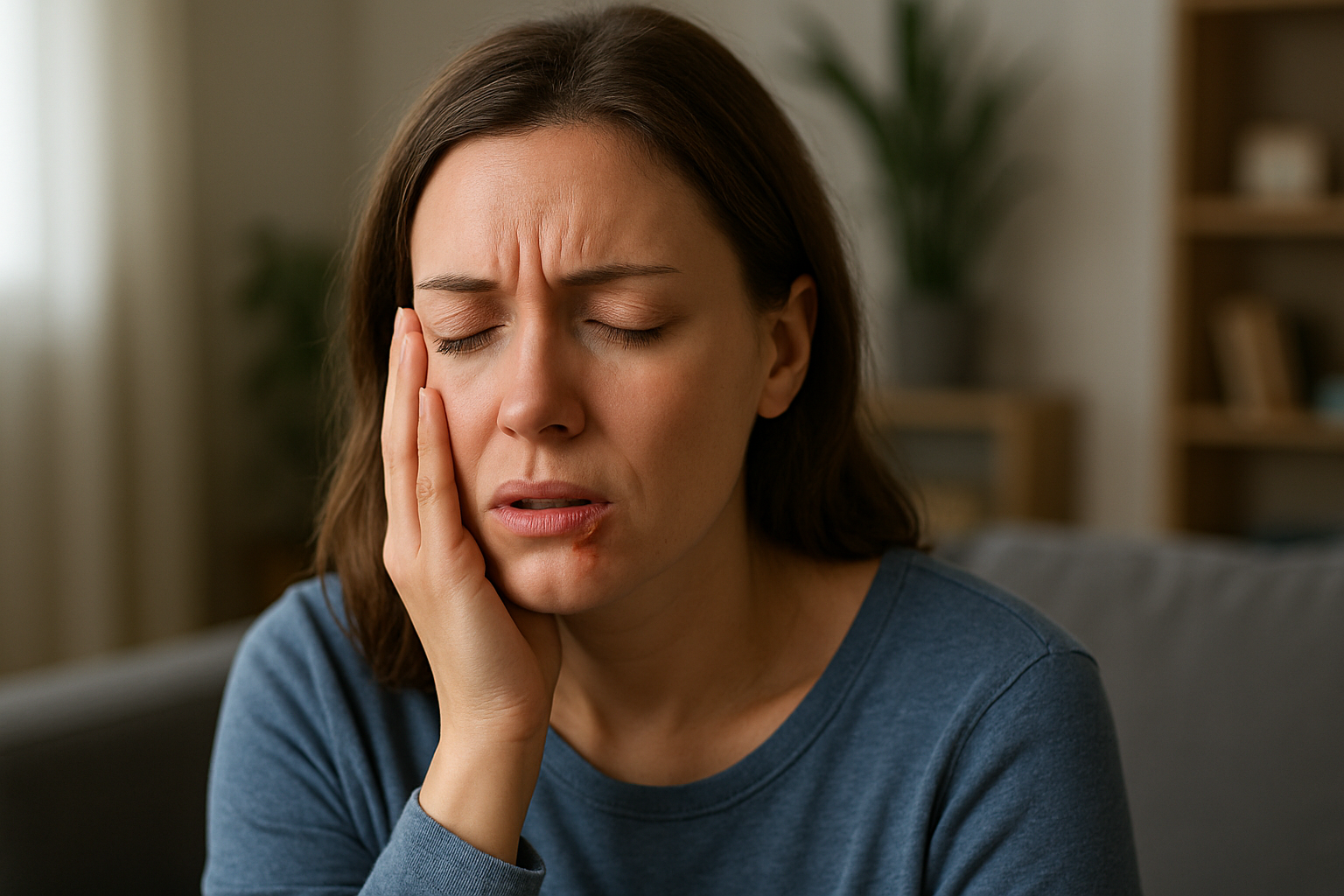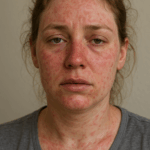At Askdoctor.ai, we understand that living with Behçet’s disease can be overwhelming and challenging, both physically and emotionally. The unpredictable nature of this rare autoimmune disorder, coupled with its wide-ranging symptoms, often leaves individuals feeling isolated and uncertain. That’s why we’ve created this content to help you better understand Behçet’s disease, its symptoms, treatment options, and ways to manage its impact on your life. Our goal is to provide you with evidence-based information, real-life stories, and practical tips that can empower you to take control of your health and live a fulfilling life, despite the challenges.
Behçet’s disease is a rare, chronic condition that can dramatically impact daily life. Affecting an estimated 1 in every 170,000 people in the United States, Behçet’s is often referred to as an “orphan disease” due to its low prevalence. However, it’s much more common in countries along the Silk Road, stretching from Japan to the Mediterranean region. Though its symptoms can be difficult to manage, the right treatments and lifestyle adjustments can make a significant difference in your quality of life.
This article dives into everything you need to know about Behçet’s disease, including its symptoms, causes, treatment options, and tips for living well. If you or someone you know is struggling with Behçet’s, it’s important to understand that you are not alone—there are ways to manage the condition effectively.
Symptoms and Causes of Behçet’s Disease
Recognizing the Symptoms
Behçet’s disease is known for its unpredictability. The symptoms can vary from person to person, and they may come and go in flare-ups. Here are the most common symptoms to watch for:
- Mouth Sores (Aphthous Stomatitis):
Almost everyone with Behçet’s disease experiences painful mouth ulcers. These sores can be very uncomfortable and often appear in clusters. They tend to recur frequently, making them one of the most frustrating aspects of the disease. - Genital Ulcers:
Painful sores in the genital area are another hallmark of Behçet’s. These can be especially difficult to manage, as they often cause discomfort during daily activities. - Skin Lesions:
Individuals with Behçet’s may notice red, acne-like bumps or ulcers on the skin, particularly on the arms, legs, and trunk. These skin lesions are often painful and may be tender to the touch. - Eye Inflammation (Uveitis):
Involvement of the eyes is a major concern in Behçet’s disease. Up to 70% of patients develop uveitis or other forms of eye inflammation, which can lead to vision problems if not properly treated. Untreated uveitis may cause permanent damage. - Joint Pain and Swelling:
Behçet’s can cause inflammation in the joints, especially in the knees, ankles, and wrists. This can lead to joint pain, swelling, and stiffness, affecting daily activities. - Gastrointestinal Symptoms:
Some people experience digestive issues, such as abdominal pain, diarrhea, and in rare cases, gastrointestinal bleeding. These symptoms can complicate diagnosis and treatment. - Neurological Problems:
In rare cases, Behçet’s disease can affect the nervous system. Individuals may experience severe headaches, memory loss, and problems with coordination or balance.
What Causes Behçet’s Disease?
The exact cause of Behçet’s disease remains unclear. However, researchers point to a combination of genetic and environmental factors that may trigger the condition:
- Genetic Predisposition:
The presence of the HLA-B51 gene increases the likelihood of developing Behçet’s disease. Studies show that people carrying this gene are 5.78 times more likely to develop the condition. - Immune System Dysfunction:
Behçet’s disease is thought to be an autoimmune disorder, where the immune system mistakenly attacks healthy tissues. This leads to the widespread inflammation seen in the condition. - Environmental Triggers:
Infections—whether viral or bacterial—may trigger Behçet’s disease in genetically susceptible individuals. For example, certain viruses may initiate the inflammatory process that leads to flare-ups. - Geographic Distribution:
Behçet’s disease is more prevalent in countries along the Silk Road, including Turkey, Iran, and Japan. In Turkey, the disease’s prevalence reaches 400 cases per 100,000 people, whereas it remains rare in the United States and Europe.
Treatment Options for Behçet’s Disease
While there is no cure for Behçet’s disease, various treatments can help manage symptoms, reduce inflammation, and prevent flare-ups. Treatment typically involves a combination of medications and lifestyle adjustments.
Conventional Medical Treatments
Most people with Behçet’s disease rely on prescription medications to control inflammation and prevent complications. Here are the main treatments used:
- Corticosteroids (Steroids):
Prednisone and other steroids are often prescribed to reduce inflammation. These drugs can help control flare-ups, but long-term use should be monitored to prevent side effects like weight gain or high blood pressure. - Immunosuppressants:
Immunosuppressive drugs, such as azathioprine, mycophenolate, and cyclosporine, suppress the immune system and prevent it from attacking the body’s own tissues. These drugs are commonly used when corticosteroids alone are insufficient. - Biologic Therapies:
Biologics like infliximab and adalimumab (TNF-alpha inhibitors) have proven effective in treating more severe cases of Behçet’s disease, especially for those with eye inflammation or vascular complications. - Colchicine:
Used primarily for joint and skin symptoms, colchicine helps reduce inflammation and control flare-ups. It can be particularly helpful for managing the more common symptoms like mouth sores and genital ulcers. - Topical Treatments:
Topical corticosteroids and other medications can be applied directly to affected areas, such as mouth sores or skin lesions, for localized relief.
Alternative and Complementary Approaches
Some individuals with Behçet’s disease seek complementary treatments to manage their symptoms. While these methods should not replace conventional medical care, they may offer additional support:
- Anti-Inflammatory Diets:
A diet rich in omega-3 fatty acids (found in fish, flaxseeds, and walnuts) and anti-inflammatory foods (like fruits, vegetables, and whole grains) may help reduce systemic inflammation. Limiting processed foods, sugars, and red meat is also beneficial. - Mind-Body Therapies:
Stress can exacerbate Behçet’s symptoms, so incorporating relaxation techniques such as meditation, yoga, or deep breathing exercises may help manage flare-ups. - Probiotics:
Given the connection between gut health and immune system function, some patients find relief by taking probiotics to help balance gut bacteria and reduce inflammation. - Sound Frequency Healing:
Some people with chronic conditions like Behçet’s find relief through non-traditional therapies such as sound frequency healing. Though more research is needed, anecdotal reports from online communities suggest that certain frequencies, such as those used in Royal Rife therapy, may provide symptom relief.
If you’re exploring alternative therapies, it’s important to discuss them with your doctor. They can help you integrate these treatments into your care plan safely.
Real-Life Success Stories
1. Rachael’s Story: Overcoming Challenges with Behçet’s Disease
In her YouTube video, Rachael shares her personal journey with Behçet’s disease. She discusses how her symptoms first appeared and the difficulty of getting a diagnosis. Despite facing numerous health challenges, including chronic mouth ulcers and eye inflammation, Rachael emphasizes the importance of staying positive and informed.
She says, “Living with Behçet’s has its ups and downs, but focusing on small victories and staying connected with the Behçet’s community has made a huge difference in my life.”
You can watch Rachael’s full story here: Rachael’s Story
2. Jasmin’s Chronic Battle with Behçet’s Disease
Jasmin shares her childhood experiences with Behçet’s disease in this emotional video. Diagnosed at a young age, Jasmin has battled through numerous flare-ups, but she remains determined to live a full life. In her video, she talks about the importance of a strong support system and how she manages her symptoms through both medical treatment and lifestyle changes.
You can watch Jasmin’s story here: Jasmin’s Chronic Battle with Behçet’s Disease
Lifestyle Adjustments and Management Tips
Living with Behçet’s disease requires a holistic approach that combines medication, self-care, and lifestyle changes. Here are some tips for managing the disease day to day:
- Stick to Your Treatment Plan:
Consistency is key. Regularly take your medications as prescribed and attend follow-up appointments with your doctor to monitor your condition. - Protect Your Eyes:
Since eye inflammation can lead to vision loss, regular eye exams are crucial. Avoid UV light exposure and wear sunglasses to protect your eyes from further damage. - Stress Management:
Stress is a known trigger for flare-ups. Incorporating stress-reduction techniques, such as yoga or mindfulness, can help reduce the frequency of symptoms. - Follow an Anti-Inflammatory Diet:
Eat more fruits, vegetables, and healthy fats while avoiding inflammatory foods like processed snacks and sugary beverages. This can help reduce inflammation and improve your overall health. - Exercise Regularly:
Low-impact activities such as walking, swimming, or cycling can improve circulation, reduce stress, and help keep your joints flexible. - Stay Hydrated:
Drinking plenty of water is important for overall health and can help manage inflammation. - Connect with Support Groups:
Online communities and local support groups provide a platform for sharing experiences, tips, and encouragement. Being part of a community can help you feel less isolated.
FAQs About Behçet’s Disease
1. What is Behçet’s disease?
Behçet’s disease is a rare, chronic autoimmune disorder that causes inflammation in blood vessels. It can affect multiple organs, leading to symptoms like mouth ulcers, eye inflammation, and skin lesions.
2. How is Behçet’s disease diagnosed?
There is no single test for Behçet’s disease. Diagnosis is based on clinical symptoms, and doctors may rule out other conditions. Specialized tests, like blood work and eye exams, may help confirm the diagnosis.
3. Is Behçet’s disease hereditary?
While the disease does have a genetic component, it is not directly inherited. However, having a family member with the condition increases the likelihood of developing it.
4. What treatments are available for Behçet’s disease?
Treatment typically involves medications to control inflammation and prevent flare-ups, such as corticosteroids, immunosuppressive drugs, and biologics. Lifestyle changes, including dietary adjustments and stress management, can also help.
5. Can Behçet’s disease go into remission?
Yes, many individuals experience periods of remission where symptoms improve or disappear. However, flare-ups may occur, and management strategies should continue to prevent complications.
Final Thoughts: Navigating Life with Behçet’s Disease
Behçet’s disease can be a difficult condition to live with, but with the right treatment and lifestyle adjustments, individuals can manage their symptoms and live a fulfilling life. If you or a loved one has been diagnosed with Behçet’s disease, it’s crucial to stay informed, maintain open communication with your healthcare team, and seek support from others who understand the challenges.
Remember, you’re not alone in this journey. Share your story with others, learn from their experiences, and together, we can raise awareness and make life with Behçet’s disease more manageable.
Feel free to reach out for more information or share your story in the comments below!
References:
NIH – National Institutes of Health
Mayo Clinic
PubMed
The American College of Rheumatology
Behçet’s Syndrome Support
National Organization for Rare Disorders (NORD)









Leave a Reply